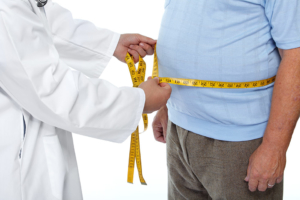Obesity and Seating – What to Consider
The University College London (2018) study stated that by 2045 22% of the world’s population will be obese (using BMI as a standardised measurement). This is significant as obesity is not a condition that stands alone, it brings with it other health concerns such as heart disease, diabetes, increased risk of stroke and reduced mobility.
The term obese refers specifically to a person with a BMI of 30+.
Other common terms include bariatric which generally refers to a person weighing over 159kg (25st) and has been replaced predominantly with the term plus sized. However, when discussing weight in relation to equipment provision and in this case seating, health care professionals are acutely aware that weight itself is not necessarily the defining or complex factor. Body shape and therefore where the weight is distributed is more commonly the focus of seating assessment and it is for this reason that many services refer to the BMI of 30+ to be ‘plus-sized’, allowing for the shorter, wider body shape.
Complications Of Obesity
- Shortness of breath.
- Lethargy.
- Heart disease.
- Oedema.
- Pulmonary disease.
- Reduced exercise tolerance.

Seating
Postural and pressure management, comfort and independence are core factors that need to be considered when selecting a suitable chair for a plus sized client. The client will often spend a great deal of time resting in the chair and may have limited movement during these periods. The functionality of the chair therefore must formulate part of the clinical reasoning process, and also take into account support requirements from a potential carer perspective and aim to ease the issues of moving and handling, thus reducing the risk of injury to carers whilst undertaking these activities.
Considerations when looking for a suitable chair:
Measurement
Measuring a chair correctly is critical in all cases, but made more complex when assessing for a plus sized person. Tissue often inhibits the ability to feel or see bony prominences as well as the impact of weight and force of gravity which encourages problematic posture. It may be advisable to use two people to ensure that the measurements are accurate.
The gluteal shelf
This is a collection of tissue at the person’s buttock area, which creates a protruding ‘shelf’. This pushes the person’s seating position forward; in standard chairs people often feel like they are perching due to the impact on back position and posture. This can affect the quality of rest time, rehabilitation and care provision.
Seat Depth, Height and Length
It is critical to ensure that the client maximises contact with the chairs surface in order to deliver high levels of support and postural control whilst seated in the chair. The seat depth and length need to be adjusted in line with the client’s leg length but must avoid pulling the client forward and into a sacral sitting position.
The height should allow the client to have their feet flat on the floor to support standing and positional change whilst being at an angle that does not create pressure on the sacrum or Ischael Tuberosity. This is generally around an inch higher than the floor to the poplitieal measurement although when considering plus size seating you need to bear in mind any excess skin.
Leg rest support for calves
The correct leg rest and calf pad is an important function to consider in seating bariatric or plus sized clients. With larger calves, there is often increased risk from falls during standing as the feet can be positioned far in front of the patient when the calf pad does not accommodate the mass of the patients’ legs. The leg rest needs to allow larger calves to maintain 90’ degree knee flexion and to enable a safe, stable standing position.
Tilt in Space and Recline Movements
A tilt in space system allows the client to recline whilst maintaining all of the body’s angles as it changes the orientation in space, allowing posture to be maintained and pressure to be redistributed as well as reducing shear and friction.
Both reclining and tilt systems can provide pressure relief, increase circulation, improve head, neck and trunk control, improve functional posture and positioning, support safe transfers by various means and minimise variations / fluctuations in the client’s muscular control. Tilt and recline systems work predominantly by moving the persons centre of gravity which whilst maintaining posture and ergonomic support allows the pannus to be redistributed. This can be used to alleviate pressure, help the respiratory system and allow access for specific skin care tasks.
Recommended seating
Repose offer a range of plus sized seating solutions starting with our general bariatric range which are suitable for the home as well as health environments through to models with more health features such as the multi-bari and a top of the range Arden model with its 4 motor mechanism for maximum postural positioning.
